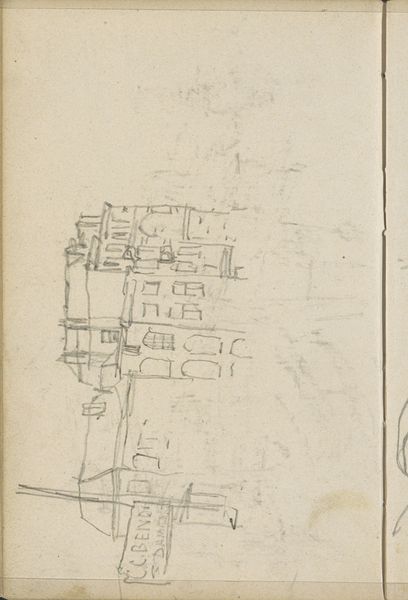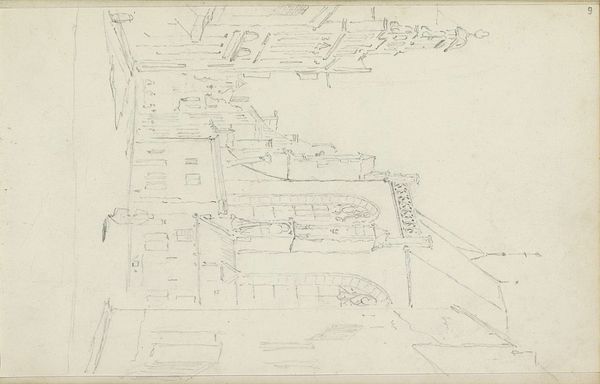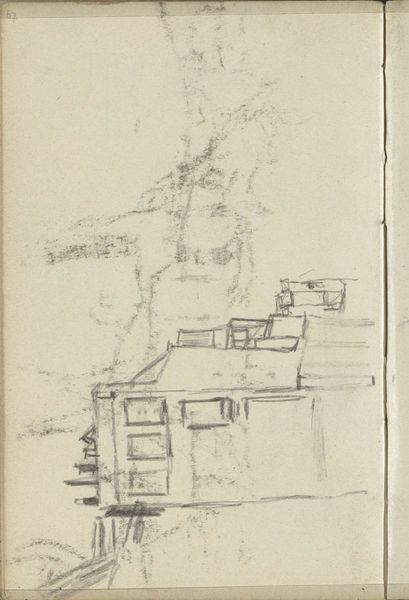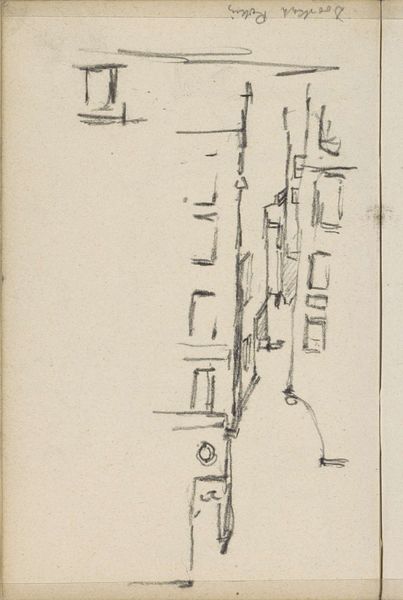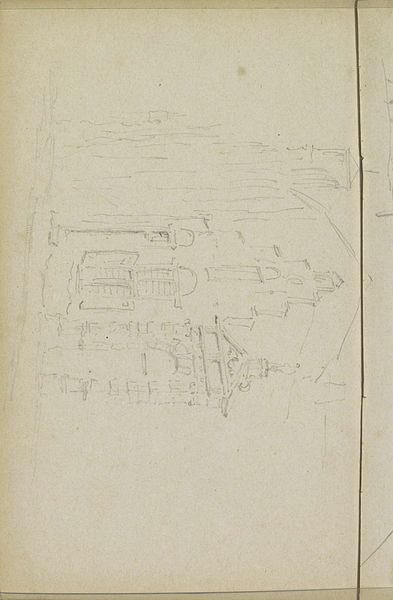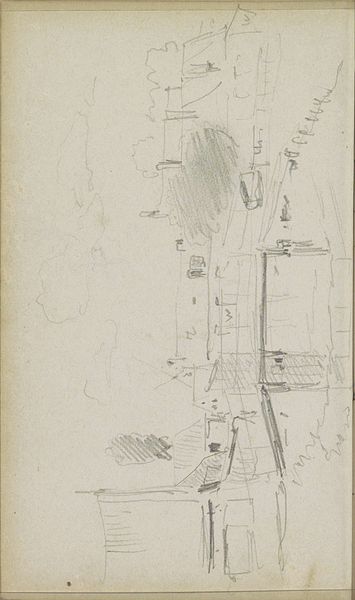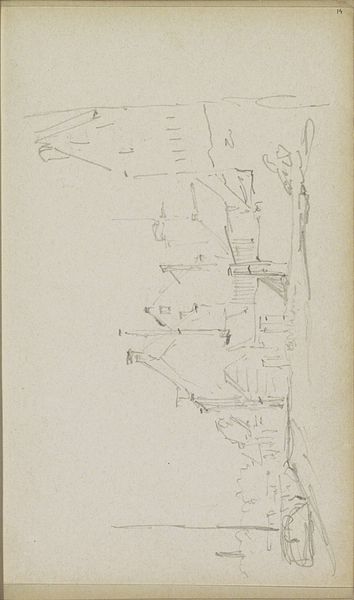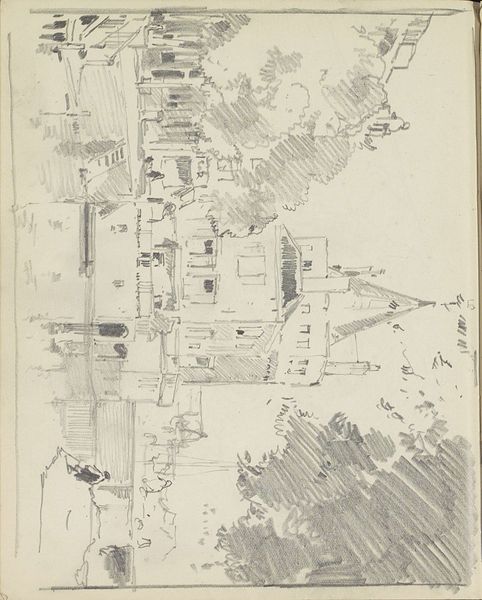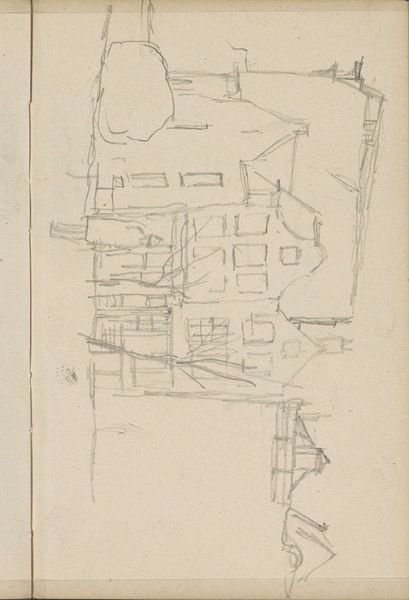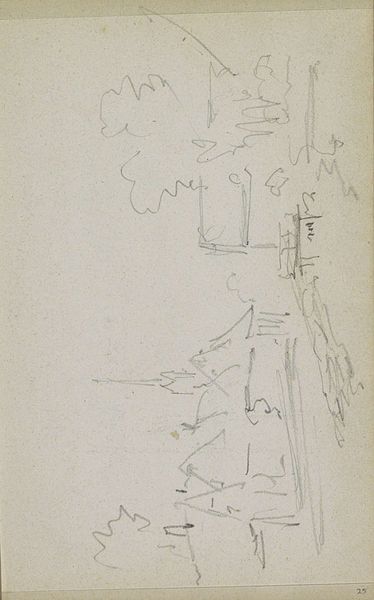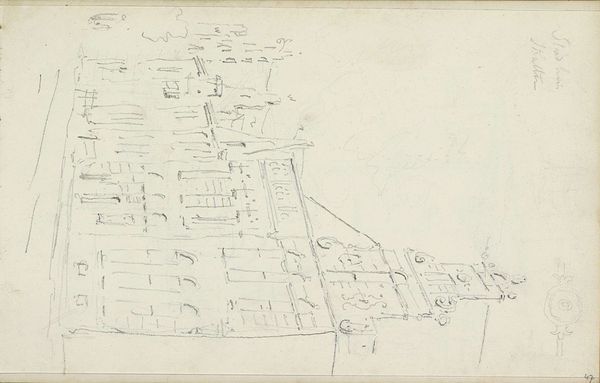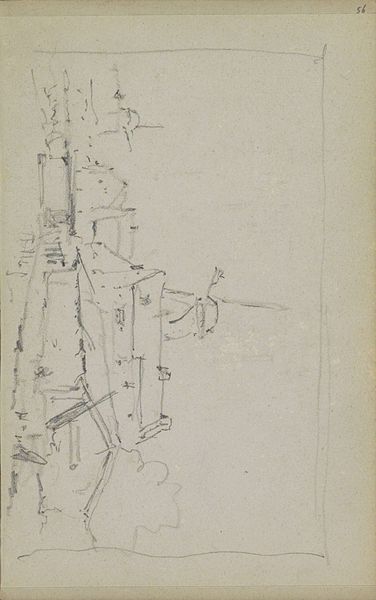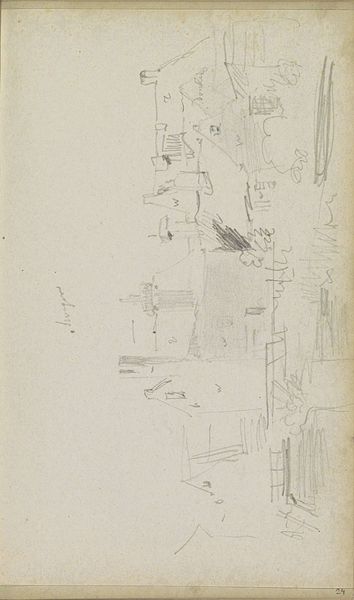
Copyright: Rijks Museum: Open Domain
Editor: This is "Gezicht in Amsterdam," a pencil drawing on paper made around 1902 by George Hendrik Breitner. It feels like a fleeting sketch, a raw glimpse of the city. What catches my eye is how architectural elements blend into seemingly random lines. How do you interpret this work? Curator: It speaks volumes, doesn't it? This isn't just a cityscape; it's a visual record of a psychological experience. Consider how Breitner, steeped in Impressionism, captures the fleeting essence of Amsterdam. The rough lines, the unfinished quality – they aren't imperfections, but potent symbols. What kind of collective memory do you think this drawing tries to preserve or construct? Editor: I see it as capturing a moment in time, almost like a photograph but more subjective. Maybe it’s preserving the feeling of a quickly changing urban landscape? Curator: Precisely! And those seemingly "random" lines you noticed? They represent the layers of history, the constant state of flux inherent in a city. Think about Amsterdam’s history of trade, immigration, and resilience. Could these lines symbolize that constant negotiation between the past and present? Editor: That's fascinating. I hadn’t thought about the lines representing historical layers. I was so focused on it being a quick sketch. Curator: Exactly! See how a "simple" sketch can unveil layers of cultural meaning? It reveals that symbols are not static, they're dynamic and responsive to context. Breitner encourages us to decipher Amsterdam’s ongoing story, not just its visible façade. What will you remember from this piece? Editor: I'll remember that art, even in its most unfinished state, holds complex layers of meaning tied to collective memory. It's a city's story told through suggestive lines.
Comments
No comments
Be the first to comment and join the conversation on the ultimate creative platform.
